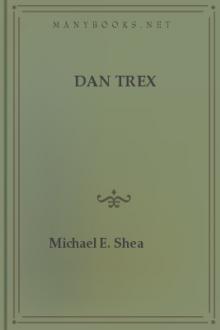How to Be a Mentsh (and Not a Shmuck), Wex, Michael [top inspirational books .txt] 📗

Book online «How to Be a Mentsh (and Not a Shmuck), Wex, Michael [top inspirational books .txt] 📗». Author Wex, Michael
(SHAAREY TESHUVA 3:138)
The phrase translated here as “a touch of murder” comes out literally as “dust of murder,” or better, “powder of murder.” It’s as much a form of murder as every astronaut’s favorite drink is a form of orange juice; just add water—or in this case, blood, the blood that has fled from the victim’s face—and there you have it, just about as good as the real thing:
He who whitens the face of another does not recognize the enormity of his sin. His spirit is not embittered by his transgression as that of the murderer is, and thus he is far from repentance.
(SHAAREY TESHUVA 3:140)
According to the most reliable accounts, it took Gerondi himself nine years to repent for his treatment of Maimonides, who had been dead for three or four decades by then and was as unable to enjoy his vindication as he had been to defend himself earlier.
IV
THE EMPHASIS PLACED on this prohibition against shaming another in public seems to reflect the importance of rapid-fire, take-no-prisoners debate—the sort of thing monumentalized in the Talmud—in Jewish life. Opening your mouth and letting a bullet fly out, embarrassing someone else in the course of a conversation, has become what might be called the default sin of Jewish social life, the one that people are most likely to commit before even realizing that they’ve done so. As long ago as 1873, a rabbi named Yisroel Meyer Kagan published a book called Chofets Chayim (Who Desires Life), about how to avoid what is called loshn ho-ro, “evil tongue”: slander, gossip, calumny, and the like.
The book, which became so popular that Kagan is still better known by its title than by his own name—he himself is almost never called anything but the Chofets Chayim—takes its title from the Psalms: “Who is the mentsh who desires life, who loves days in which he sees good? Keep your tongue from evil and your lips from speaking deceitfully” (Ps. 34:13–14).
Important and influential as Kagan’s book has proven, his mission, so to speak, was merely to remind us of what we should have known all along. In addition to the types of prohibited speech that we looked at earlier, the Talmud goes to some length to provide prescriptions for not hurting people’s feelings inadvertently. Sanhedrin 94a tells us: “Do not abuse an Aramean in front of a convert down to the tenth generation.” The popular Yiddish version of this goes: “Far a ger tor men ken goy nisht sheltn, it is forbidden to curse any gentile in front of a convert.” Similarly, we are told in tractate Bovo Metsiyo 59b, “In the presence of someone with a relative who has been hanged, do not say, ‘Hang this fish up for me.’” The Yiddish for this one comes out as, “Don’t mention rope in front of someone with a relative who has been hanged.”
The same sensitivity also extends to poverty and suffering, and has even had some influence on how people say their prayers. When I was a kid, the verse “I was a youth and have now grown old, and I have never seen a righteous man let down nor his seed go begging bread” (Ps. 37:25) was never recited aloud, even though it forms part of the grace after eating that is often sung at Orthodox or traditional gatherings that involve a meal. When a group came to this line, they would all drop their voices, recite the words in an undertone, and then come back singing for the closing verse of the blessing.
There were too many people sitting in synagogues in the fifties and sixties who had been let down in a big way during World War II for anyone to want to imply, even if only by inadvertent contrast, that they must somehow have deserved what happened to them, that maybe they and their murdered friends and families hadn’t been righteous enough.
Similar concern was also demonstrated nonverbally. One of the funds mentioned in last chapter’s list of communal agencies and relief committees was moës khitin, “wheat money,” which started out as a way of providing poor people with flour with which to make matzohs for Passover and has evolved into a charitable fund that outfits those who can’t afford it with food and other necessities for the holiday. Deliveries used to be made in middle of the night in order not to shame the recipients. I’ve even heard of cases in which non-Jews from other parts of town (generally employees of one of the guys on the committee) would be hired to do the driving; the names on the delivery lists meant nothing to them. No one would see the bags of groceries being dropped off on the recipients’ porches or in the halls of their apartment buildings; no one not on the committee would know who wasn’t making a living that year, which meant that no one could be tempted to tell someone else.
Perhaps the most dangerous kind of loshn ho-ro is what might be called “false truth” or “pseudo-truth”: statements that are factually accurate but have been made in order to hurt someone rather than convey information or advance the cause of learning. Speech of this type is the particular preserve of the kind of shmuck who likes to glory in her “plain-spoken honesty,” the tell-it-like-it-is, I-call-it-the-way-I-see-it sort of dork who never has a good word for anything and generally hides behind the excuse of “Well, it’s true, isn’t it?”
This commitment to acting like an eleven-year-old who has just looked hypocrisy up in a dictionary is dealt with in the Talmud in connection with weddings: What do you do when the bride is a pooch? Praising and entertaining the bride is a huge mitzvah; wedding guests still dance in front of the bride, and they used to sing her praises as





Comments (0)